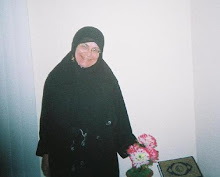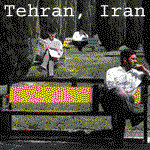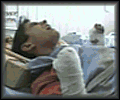Rough ride for Lebanon's displaced
12 July 2007
By Omar Khalifa
The Israeli-Hezbollah conflict resulted in 1,191 deaths, destroyed 30,000 homes and displaced almost one million Lebanese - one quarter of the population, according to Lebanon's Higher Relief Council (HRC).
About 200,000 Lebanese remain internally displaced, trying to rebuild the homes and livelihoods destroyed by the Israeli army one year ago.
About 90 per cent of displaced families have returned to their homes in southern Lebanon, south Beirut and the Bekaa valley in eastern Lebanon, but more than 900,000 cluster bombs still plague their land.
Katia Saleh, a London-based film-maker in Beirut, said: "Sixty to 70 per cent of people in the south are still displaced next door to where they lived, in shacks, or in tents.
"I met a woman who had a boutique next to her house. In the war, the house was destroyed but the boutique stayed. She put her family in one room in the boutique; and she stayed in the back, while her five children lived in tents on top of the building.
"Very few people don't want to come back ... Some returned on the day of the ceasefire. Probably 10 per cent of people have not returned to their original homes."
However, of that 10 per cent, Djurhuus said: "You can say eight per cent have settled at least in the area where they were from, or to Beirut, or Mount Lebanon, where they have decided to stay for some reason.
"And then you have the other two per cent who are still trying to go back, or trying to find a place with a neighbour to stay with, or they want to go back and they simply didn't make it."
The UN Commission of Inquiry, set up on August 11, 2006, was mandated to investigate the targeting of civilians by Israel.
Its report said that displacement was a result of "direct or indirect, of indiscriminate attacks on civilians and civilian property".
The report also concluded that displacement was caused by the "climate of fear and panic among the civilian population caused by the warnings, threats and attacks by IDF [Israeli Defence Force]".
Cause and effect
According to Dina Abou Samra from the Norwegian refugee council's internal displacement monitoring centre (NRC/IDMC), "there were civilian areas that were targeted and there didn't seem to be any military point".
A November 2006 Amnesty International report documented the experience of one Lebanese family who survived an Israeli attack on their car after Israeli authorities told them to leave their home.
One family member said: "The army told us to leave the village but those who did leave were bombarded and killed. Why? A car full of children?"
The attack on the convoy on July 15 left 23 civilians dead, most of them children. The residents only evacuated their village after they were ordered to do so by Israeli soldiers.
Throughout the conflict, Israel dropped leaflets across civilian areas warning the population to leave the area before air raids took place.
"They used satire and pictures in leaflets dropped by plane in different areas of Beirut, telling them that if they wanted to return they should turn away from Hezbollah," Abou Samra said.
But destroyed bridges, lack of transport, and physical disability prevented many people from fleeing their homes and as a result, they were caught up in the conflict.
In the months following the UN-brokered August 14 ceasefire, the destruction of homes and infrastructure is still having a significant impact on the return and sustainable reintegration of displaced people.
"I've seen a lot of villages that have been severely bombed, such as Sadikin and Ait al-Shaab - two villages in which 90 per cent of the houses were destroyed," Saleh said.
Richard Evans, NRC/IDMC's representative in Tyre, southwestern Beirut, said: "Totally destroyed houses have been reconstructed very slowly. You can't just rebuild your house, you need planning permission."
Cluster bomb threat
One year on, the presence of unexploded cluster bombs in southern Lebanon has become the greatest concern for returnees and local communities
 Houses that were completely destroyed have not been a redevelopment priority [NRC/IDMC]
Houses that were completely destroyed have not been a redevelopment priority [NRC/IDMC]Neil Sammonds of the Amnesty International said: "At the end of the war, a million cluster bomb units were in Lebanon, of which about 10 per cent have been cleaned up.
"Today, 922 sites are still in existence ... which amounts to 900,000 cluster bomb units."
Amnesty International reported the story of six-year-old Abbas Yousef Shibli who was playing with three friends in the village of Blida when they saw what they thought was a perfume bottle.
One of the boys picked it up and it exploded leaving Abbas with devastating injuries -- a ruptured colon and gall bladder, a perforated lung and a torn medial nerve.
Long-term damage
Sammonds said: "They're still there under the surface, stopping people getting back to their redevelopment. You can't really work your land if you still have 900,000 cluster bomb units spread across the fields."
It is estimated that the majority of cluster bombs were scattered between the Litani river and the Lebanese-Israeli border, where the Israel army accelerated their usage during the last 72 hours before the ceasefire.

Israel increased the use of cluster bombs in the last 72 hours of the conflict [Gallo/Getty]
One Israeli commander, quoted in Haaretz newspaper, said: "In Lebanon, we covered entire villages with cluster bombs ... What we did there was crazy and monstrous."
Jan Egeland, UN under-secretary-general for humanitarian affairs, condemnded Israel's use of cluster bombs in Lebanon as "completely immoral".
Abou Samra said: "We have received reports that many villages are not as populated as they were before the war.
"There are definitely fewer people around - we've had local mayors saying that the population is much lower now in their districts."
UNHCR's Djurhuus, said: "People left the country, or they just stayed in other places and they don't want to go back because of the cluster bombs.
"We can see that displaced people are back, but we can also see that the population is not back to what it was before."
"It's quite remarkable to see so many empty houses."



















0 Comments:
Post a Comment
<< Home